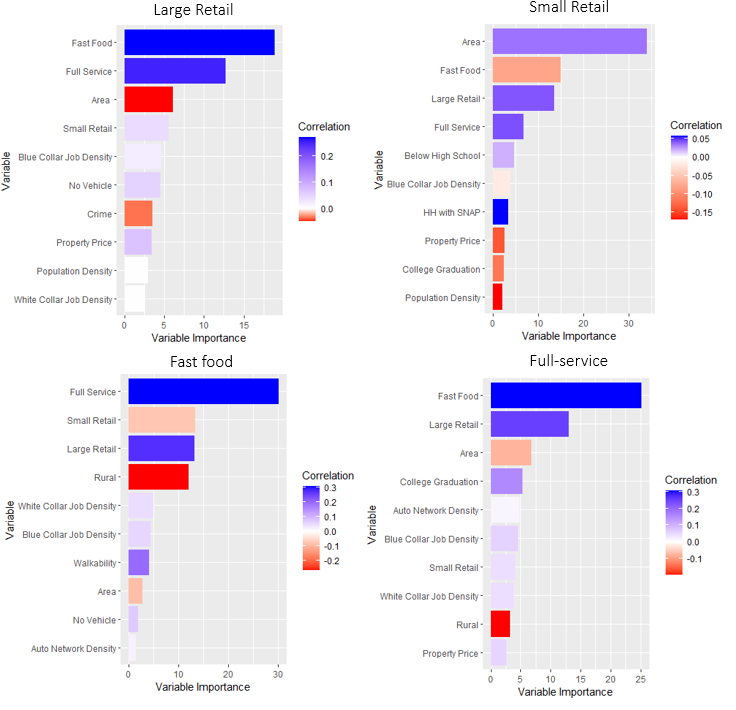Determinants of the presence, density, and popularity of U.S. food retailers
Abstract
We census tract-level data to determine the presence, density, and popularity of U.S. food retailers. We merge census tract-level demographic data, neighborhood amenities, and Point of Interest (POI) data from anonymized cellphone GPS ‘pings’ to identify food retailer location and foot traffic information.
We first utilize machine learning models to predict the location of four types of food retailers, namely, large retailers, small retailers, fast food restaurants, and full service restaurants. Our models can detect these food stores with a prediction accuracy of 72%-92% out of the sample. We then use Poisson-based regression techniques to determine the factors that affect the density and popularity of these food stores.
We find that the density and popularity of every store type is consistently and significantly related to the presence, density, and popularity of other store types, indicating that nearby businesses are often complementary and helpful in driving customer traffic to other stores. We also find that low income, and blue-collar dense neighborhoods have lower presence of and lower foot traffic to large retailers, fast food and full service restaurants; residents in these neighborhoods are more likely to visit small retailers which often have a smaller selection of food items.
Neighborhoods with higher ethnic diversity are less likely to visit large retailers. In particular, Hispanic and Asian neighborhoods have greater presence, counts and visits to small retailers, fast food and full service restaurants, but have lower counts of and visits to large retailers. Black neighborhoods tend to have lower presence, counts and visits to large retailers, fast food and full service restaurants, and higher counts of and visits to small retailers.
For business decision makers and store owners in particular, this study elicits business opportunities to drive foot traffic to particular store types. The results also address socioeconomic and racial inequities in food access to improve affordability and quality of foods in remote communities to positively impact food choices.
